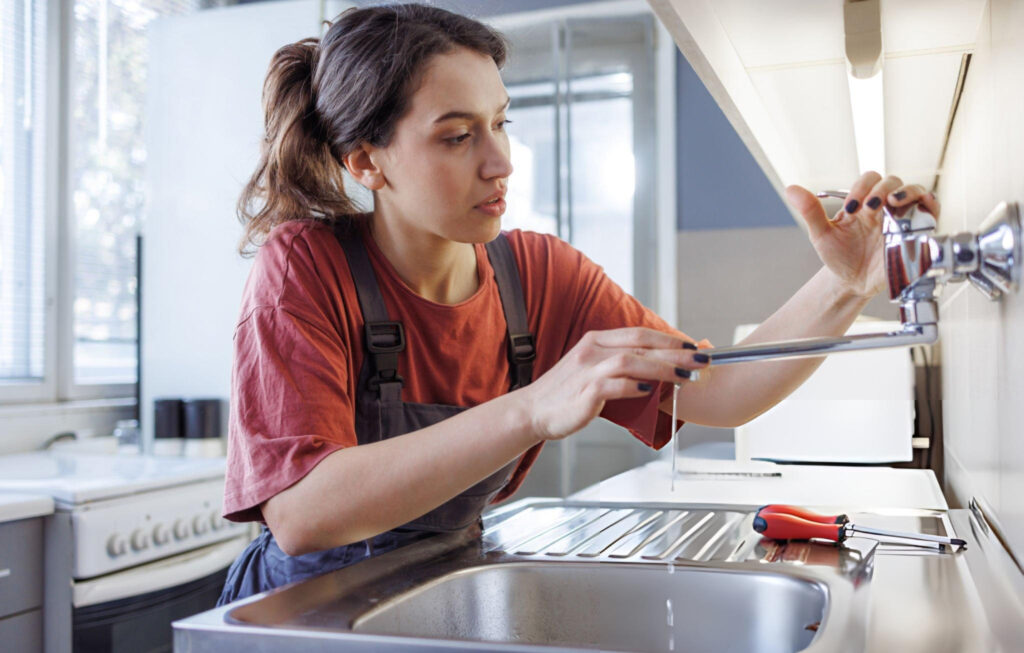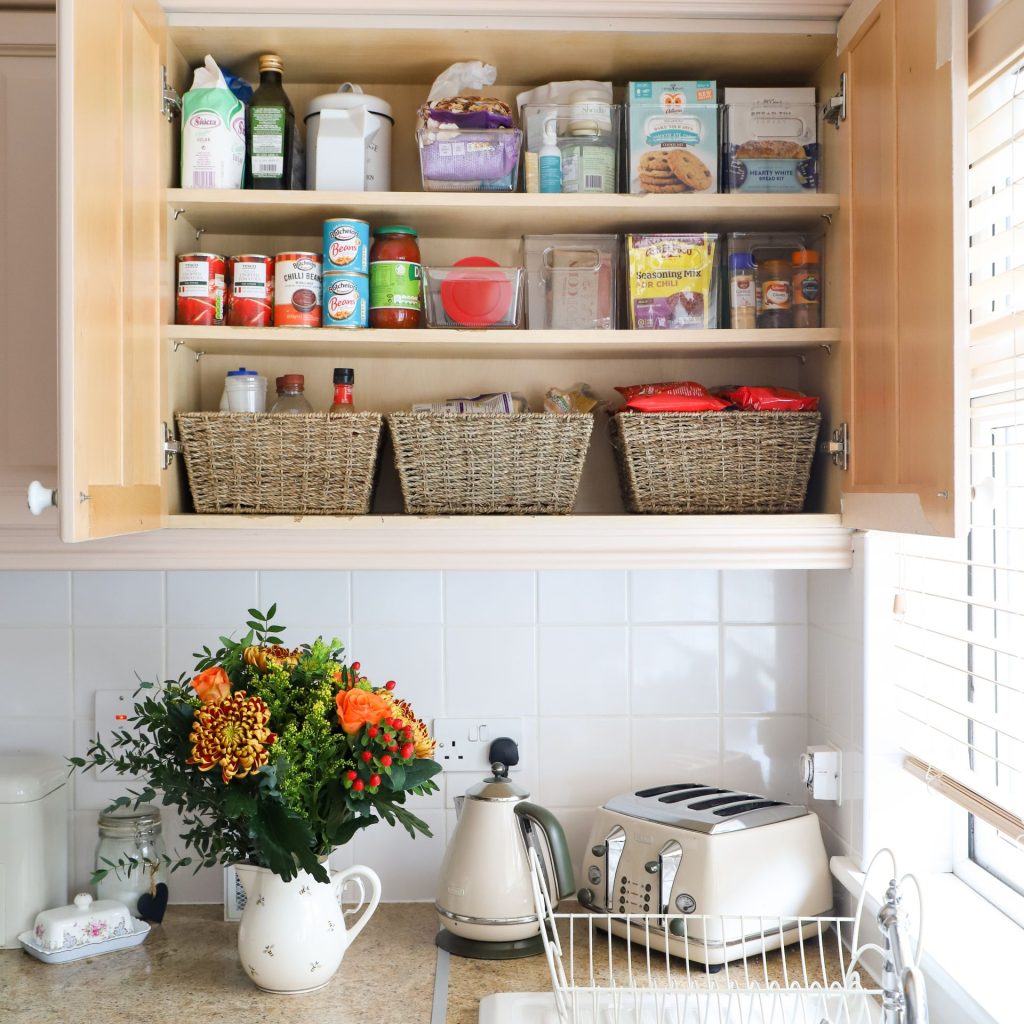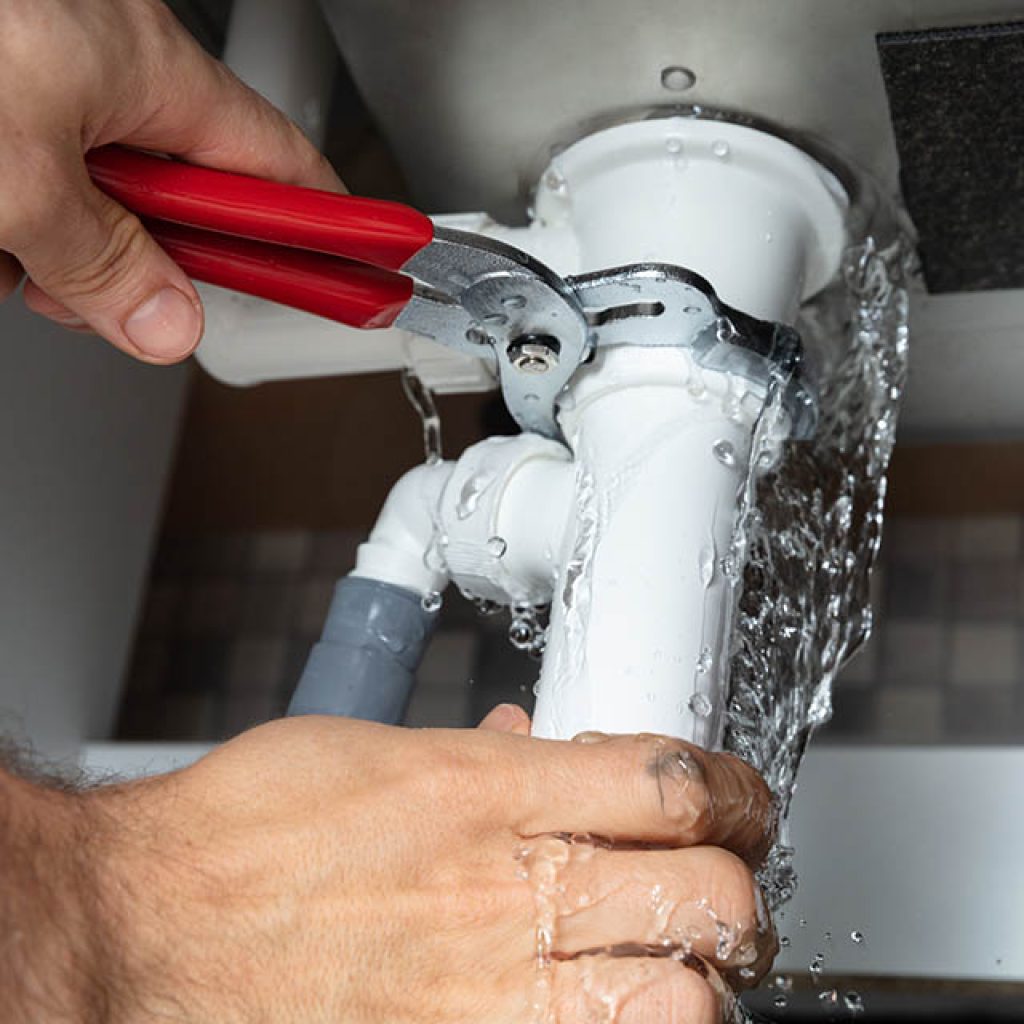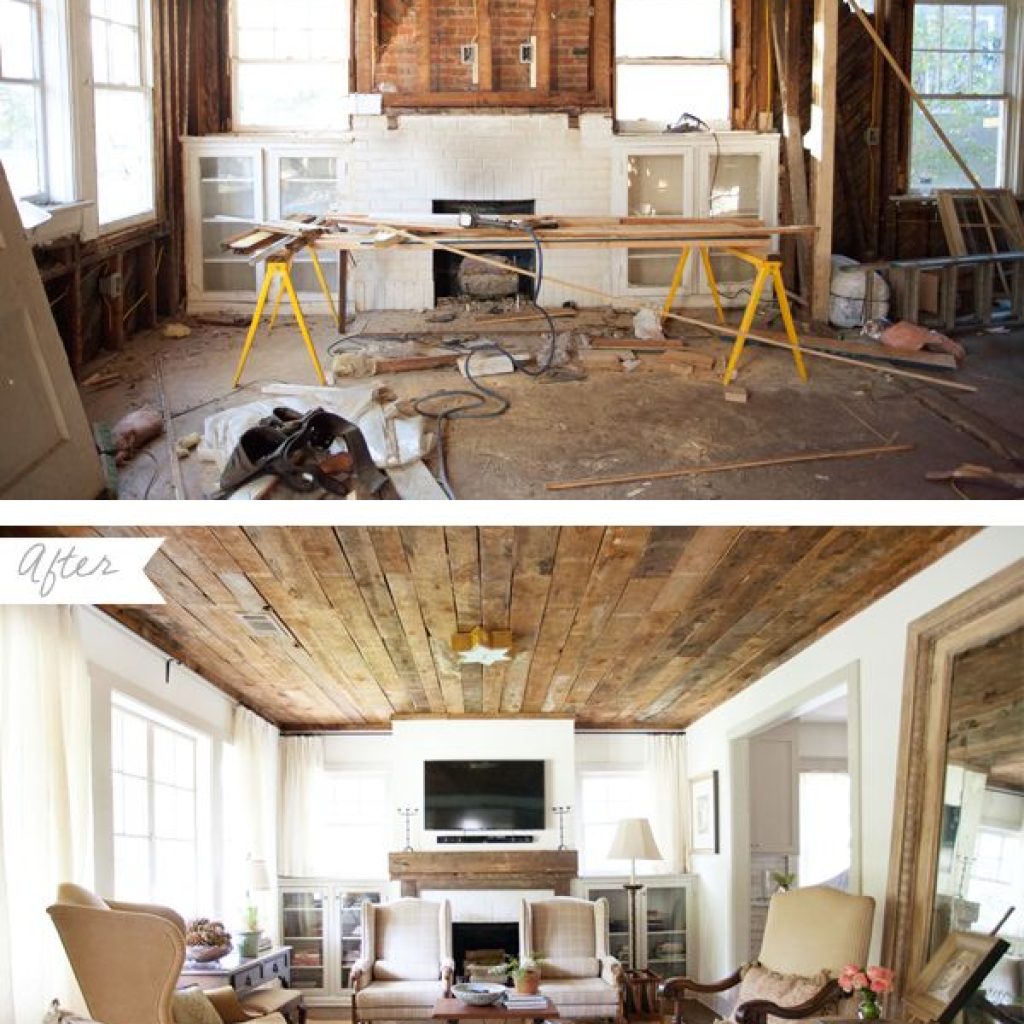Home automation can make life easier and more convenient. Imagine controlling lights, security, and appliances with a simple touch or voice command.
DIY home automation ideas for everyday convenience can easily transform your space into a smart home without the high costs.
In this blog post, we will explore various diy home automation ideas for everyday convenience that you can implement to enhance your daily life.
From smart lighting to automated security systems, these ideas are perfect for anyone looking to improve home efficiency and comfort.
Whether you are tech-savvy or a beginner, these projects are designed to be simple and straightforward, ensuring that you can easily bring the convenience of automation into your home.
Get ready to discover practical and affordable ways to make your home smarter.
Smart Lighting
Imagine walking into a room and having the lights turn on automatically or adjusting the brightness just by using your voice. Smart lighting can make your home more convenient and save on energy bills. Discover diy home automation ideas for everyday convenience with smart lighting solutions.
Led Bulbs
LED bulbs are not just energy-efficient; they are a cornerstone of smart lighting. Here’s why you should consider them:
- Energy Efficiency: LED bulbs use less power than traditional incandescent bulbs. This means you save on electricity bills.
- Longevity: They last longer, so you won’t be changing bulbs often.
- Smart Features: Many LED bulbs come with smart features. You can control them with your smartphone or voice assistants like Alexa or Google Assistant.
For example, I replaced all my old bulbs with smart LED bulbs. Now, I can dim the lights or change their color to set the perfect mood for movie nights, all from my phone. Trust me, once you start using them, you won’t go back!
Motion Sensors
Motion sensors are a fantastic addition to your smart lighting setup. They make life easier in so many ways:
- Automatic Lighting: Motion sensors can turn on lights when they detect movement. No more fumbling for switches in the dark.
- Security: They can deter intruders by illuminating areas when someone approaches.
- Energy Savings: Lights turn off automatically when no motion is detected, saving energy.
One time, I installed a motion sensor in my hallway. It was a game-changer! Now, the lights come on as soon as I step in, and I never have to worry about leaving the lights on by accident. Plus, it’s a fun conversation starter when guests visit.
| Feature | Benefit |
|---|---|
| Energy Efficiency | Saves money on electricity bills |
| Longevity | Less frequent bulb changes |
| Automatic Lighting | Convenience and security |
Smart lighting can truly transform your home, making it more convenient and efficient. Whether it’s LED bulbs or motion sensors, these diy home automation ideas for everyday convenience are easy to implement and provide great benefits. Give them a try, and you’ll wonder how you ever lived without them!
Automated Climate Control
Automated climate control makes managing your home’s temperature effortless. Imagine walking into a comfortable home without lifting a finger. These DIY ideas help you achieve the perfect environment easily.
Smart Thermostats
Smart thermostats adjust your home’s temperature based on your routines. They learn your habits and set the temperature just right. You can control them remotely using your smartphone. This ensures your home is always at your preferred temperature.
Installing a smart thermostat is simple. It connects to your existing HVAC system. Follow the instructions provided with the device. Most smart thermostats are compatible with voice assistants like Alexa or Google Assistant. This makes controlling your home’s climate even easier.
Automated Fans
Automated fans help circulate air in your home efficiently. They turn on and off based on room temperature. This keeps the air fresh and reduces the need for constant air conditioning.
Setting up automated fans is straightforward. Use smart plugs to control regular fans. Connect the smart plugs to a home automation system. You can set schedules or control them remotely. This ensures your home remains cool without wasting energy.
Voice-controlled Assistants
Imagine walking into your home and simply saying, “Turn on the lights,” and voilà, the lights come on. No fumbling for switches or remotes. Voice-controlled assistants are making everyday tasks easier, more fun, and incredibly convenient.
Let’s dive into two popular options: Amazon Alexa and Google Home.
Amazon Alexa
Amazon Alexa is like having a helpful friend who never tires of your requests. Whether you want to play music, check the weather, or control your smart home devices, Alexa’s got your back.
- Music Control: Alexa can play your favorite songs from Amazon Music, Spotify, and other platforms. Just say, “Alexa, play jazz music,” and your living room transforms into a cozy jazz club.
- Smart Home Integration: Connect Alexa to smart bulbs, thermostats, and more. You can adjust the temperature, dim the lights, or even lock your doors with simple voice commands.
- Reminders and Alarms: Need to remember to take out the trash? Set a voice reminder with Alexa, and it will notify you at the specified time.
Setting up Alexa is a breeze. Simply plug in the Echo device, connect it to Wi-Fi, and download the Alexa app on your smartphone. Follow the on-screen instructions, and you’re ready to start commanding your assistant!
Google Home
Google Home is another fantastic option for voice-controlled assistance. It’s like having a knowledgeable companion who can answer questions, help manage your day, and keep your home running smoothly.
- Google Assistant: Google Home uses Google Assistant to respond to your voice commands. Ask it anything from trivia questions to today’s schedule, and get instant answers.
- Home Automation: Like Alexa, Google Home can control smart home devices. Say, “Hey Google, turn off the kitchen lights,” and watch as your command is executed flawlessly.
- Entertainment: Stream movies, TV shows, and music with Google Home. Connect it to Chromecast or your favorite streaming services for endless entertainment options.
Setting up Google Home is straightforward. Plug in your Google Home device, connect it to Wi-Fi, and download the Google Home app. Follow the prompts, and soon you’ll be conversing with Google Assistant like an old friend.
Both Amazon Alexa and Google Home offer unique features and benefits that can transform your living space into a smart, efficient, and enjoyable environment. So, which one will you choose to make your life a little easier?

Credit: www.toptal.com
Security Systems
When it comes to diy home automation ideas for everyday convenience, security systems are often a top priority for homeowners. They not only offer peace of mind but also significantly improve the overall safety of your home.
In this section, we will explore some practical and easy-to-install security solutions that you can implement yourself.
By the end of this read, you’ll feel more confident in securing your home while enjoying the convenience that smart technology brings.
Smart Locks
Gone are the days of fumbling for your keys at the door. Smart locks have transformed the way we secure our homes, offering a blend of convenience and safety. Imagine this: you’re carrying a load of groceries, and your front door unlocks itself as you approach. That’s the magic of smart locks!
These locks can be controlled via a smartphone app, allowing you to lock or unlock your door remotely. Some even have features like fingerprint recognition or voice control. Here are a few benefits of installing smart locks:
- Remote Access: Lock or unlock your door from anywhere using your smartphone.
- Keyless Entry: No more lost or forgotten keys.
- Access Logs: Keep track of who enters and exits your home.
- Guest Access: Grant temporary access to friends or service providers without handing over physical keys.
Installing a smart lock is usually straightforward and can be done with basic tools. Most smart locks are designed to fit over your existing deadbolt, making the installation process quick and simple.
Surveillance Cameras
Surveillance cameras are another crucial component of a DIY home security system. They act as your eyes when you’re not around, allowing you to monitor your home in real-time. There are various types of surveillance cameras available, each with unique features to suit different needs.
Consider these popular options:
- Indoor Cameras: Perfect for monitoring the inside of your home, keeping an eye on pets, or watching over children.
- Outdoor Cameras: Designed to withstand the elements, these cameras are ideal for keeping an eye on your property’s exterior.
- Doorbell Cameras: Combine the functionality of a doorbell with a surveillance camera, allowing you to see and communicate with visitors remotely.
Here’s a table to summarize the key features:
| Camera Type | Features |
|---|---|
| Indoor Cameras | High-resolution video, night vision, motion detection |
| Outdoor Cameras | Weatherproof, wide-angle lens, infrared night vision |
| Doorbell Cameras | Two-way audio, motion alerts, live video feed |
Setting up surveillance cameras can be a bit more involved than installing smart locks, but it’s still manageable for a DIY enthusiast. Many modern cameras are wireless and can be set up with minimal drilling or wiring.
So, whether you’re looking to keep an eye on your front porch or monitor the activity inside your home, surveillance cameras offer a reliable and user-friendly solution.
By integrating smart locks and surveillance cameras into your home security system, you can significantly enhance your home’s safety and convenience. And the best part? You can do it all yourself!
Energy Management
With the rise of smart technology, managing energy consumption in our homes has never been easier. Home automation isn’t just about convenience; it’s also about making our living spaces more efficient and eco-friendly.
By integrating diy home automation ideas for everyday convenience, you can take control of your energy usage, reduce waste, and even save money on your utility bills.
Let’s dive into some practical ways to achieve better energy management through home automation.
Smart Plugs
Smart plugs are a fantastic entry point into the world of home automation. These nifty devices allow you to control your appliances remotely, making it easy to manage energy consumption. Imagine turning off your coffee maker from your phone while you’re still in bed.
Or, how about scheduling your lights to turn off automatically when you leave the house? With smart plugs, these scenarios are not just possible but also incredibly easy to set up.
Here are a few ways smart plugs can help you save energy:
- Remote Control: Turn off devices that are not in use, even when you’re not home.
- Scheduling: Set timers for your devices to ensure they only operate when needed.
- Energy Usage Monitoring: Some smart plugs come with features that track how much energy your devices use.
Setting up smart plugs is straightforward. Plug them into a wall socket, connect them to your Wi-Fi, and pair them with a smart home app. Soon, you’ll be wielding the power of smart technology to manage your home’s energy consumption more effectively.
Energy Monitoring
Energy monitoring is a crucial aspect of home automation that provides insights into how much energy your household consumes. This information is invaluable for making informed decisions about your energy usage.
By identifying which devices are the biggest energy hogs, you can take steps to reduce consumption and lower your electricity bills.
Consider these benefits of energy monitoring:
- Real-Time Data: Get instant feedback on your energy usage and see which devices are consuming the most power.
- Historical Data: Track your energy consumption over time to identify patterns and potential savings.
- Alerts: Receive notifications when unusual energy usage is detected, allowing you to take immediate action.
Installing an energy monitoring system might sound daunting, but many DIY options are available. For instance, you can use a smart home hub that connects to your electrical panel or individual smart plugs with energy monitoring capabilities. These systems typically come with user-friendly apps that display your energy usage in an easy-to-understand format.
Incorporating energy management into your diy home automation ideas for everyday convenience not only brings ease but also supports a more sustainable lifestyle. So why not start today? With smart plugs and energy monitoring, you’ll be well on your way to a smarter, greener home.
Irrigation Systems
Dreaming of a lush garden without the hassle? Diy home automation ideas for everyday convenience make it easy. With automated irrigation systems, you can simplify yard care, save water, and keep your plants thriving. Discover smart, budget-friendly ways to upgrade your garden with automation.
Smart Sprinklers
Smart sprinklers are a fantastic addition to any garden. They allow you to control watering from your phone. You can set schedules and adjust them as needed. This means no more overwatering or underwatering. Smart sprinklers also help save water, making them eco-friendly. Many models can even be integrated with voice assistants for hands-free control.
Weather Sensors
Weather sensors take your irrigation system to the next level. These sensors monitor weather conditions in real-time. They adjust your watering schedule based on rain, temperature, and humidity. This ensures your garden gets the right amount of water. No more watering during a rainstorm. Weather sensors can also help save water and reduce your water bill. They are easy to install and can work with most smart sprinkler systems.
Entertainment Automation
Having a home that caters to your entertainment needs with just a few taps on your smartphone can be a game-changer. Imagine walking into your living room, and with a simple voice command, your favorite movie starts playing, or your favorite playlist fills every corner of your home. This is not a scene from a sci-fi movie; it’s the reality of entertainment automation.
Let’s dive into some DIY home automation ideas for everyday convenience, focusing on Smart TVs and Multi-Room Audio.
Smart Tvs
Gone are the days when you needed multiple remotes to control your TV, DVD player, and sound system. With smart TVs, you can integrate all your entertainment devices into one seamless system. Here are a few tips to get started:
- Voice Control: Use devices like Amazon Echo or Google Home to control your TV with voice commands. Say goodbye to searching for the remote!
- Streaming Services: Connect your smart TV to streaming services like Netflix, Hulu, or Disney+. You can even set up profiles for each family member to keep recommendations personalized.
- Smartphone Integration: Download the TV’s companion app on your smartphone to control the TV, browse content, and even use your phone as a remote.
Imagine hosting a movie night and being able to dim the lights and start the film without leaving your seat. It’s not just convenient; it’s downright cool!
Multi-room Audio
Multi-room audio systems allow you to enjoy your favorite music, podcasts, or audiobooks in any room of your house. Here’s how you can set up a system that works for you:
- Choose Your System: Popular options include Sonos, Bose, and Google Home. These systems are easy to set up and use.
- Placement of Speakers: Strategically place speakers in different rooms. Consider the acoustics and the primary use of each room.
- Syncing Devices: Sync all your devices using the system’s app. This allows you to control the music from anywhere in your home.
- Create Playlists: Create different playlists for different moods or occasions. You can even set up a “wake-up” playlist that plays soft music in the morning.
With multi-room audio, you can have a party atmosphere in the living room while enjoying a quiet audiobook in the bedroom. The possibilities are endless!
Entertainment automation can make your life easier and your home smarter. Whether you’re a tech novice or a seasoned pro, these DIY ideas are simple enough for anyone to implement. Happy automating!
Kitchen Convenience
Imagine starting your day with a kitchen that responds to your needs—lights on, coffee brewing, and everything ready with a simple tap. With diy home automation ideas for everyday convenience, transforming your morning routine into a smooth, stress-free experience is easier than ever.
Let’s explore some exciting ideas to automate your kitchen and bring a touch of magic to your everyday life.
Smart Appliances
Smart appliances are the backbone of a modern kitchen. They save time and make cooking more fun. Here are some top picks to consider:
- Smart Coffee Maker: Set it up the night before and wake up to the smell of freshly brewed coffee. Many models can be controlled via an app, so you can start brewing from your bed.
- Smart Refrigerator: Forget to check the fridge before going shopping? No problem. Smart fridges have cameras inside, so you can see what you need right from your phone.
- Smart Oven: Preheat your oven on your way home from work. Some smart ovens even suggest recipes and adjust cooking times for perfect results.
Automated Lighting
Lighting sets the mood in your kitchen and makes tasks easier. Here are some DIY ideas to automate your kitchen lighting:
- Motion Sensors: Install motion sensors under cabinets to light up your countertops when you need them. No more fumbling in the dark for that midnight snack!
- Voice-Controlled Lights: Connect your lights to a smart speaker like Alexa or Google Home. Simply say, “Turn on the kitchen lights,” and watch them glow.
- Schedule Lighting: Program your lights to turn on and off at specific times. Perfect for those early mornings or late-night cooking sessions.
By incorporating these smart appliances and automated lighting ideas into your kitchen, you can transform it into a space that’s not only functional but also enjoyable to be in. So, why not give it a try and see how much more convenient your kitchen can become?

Frequently Asked Questions
What Are Some Examples Of Automation In Our Daily Life?
Examples of daily life automation include smart home devices, robotic vacuum cleaners, programmable thermostats, and automatic coffee makers.
What Else Can I Automate In My Home?
You can automate lighting, thermostats, security cameras, door locks, and home entertainment systems. Smart appliances, irrigation systems, and blinds are also options.
What Is The #1 Product That Users Wish To Control With Home Automation?
The #1 product users wish to control with home automation is lighting. Smart lighting enhances convenience, security, and energy efficiency.
What Are The 3 Common Uses Of Home Automation?
Home automation is commonly used for controlling lighting, enhancing home security, and managing climate systems.
Conclusion
Bringing DIY home automation into your life offers great convenience. Simple projects can save time and effort daily. Start with small changes, like smart lights or thermostats. These improvements make your home more efficient and comfortable. Explore various ideas that fit your needs and budget.
Enjoy the benefits of a smarter home today. It’s easier than you think. Embrace the future of home automation and enjoy a more convenient lifestyle. Happy automating!












2 thoughts on “Diy Home Automation Ideas for Everyday Convenience: Simplify Life”
Pingback: Installing Smart Sensors for Home Security and Efficiency: Ultimate Guide – Sweet Home Zone
Pingback: Best Door Locks for Rental Property: Top Security Picks - Sweet Home Zone